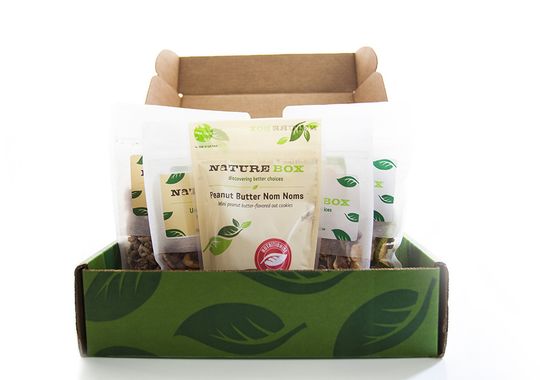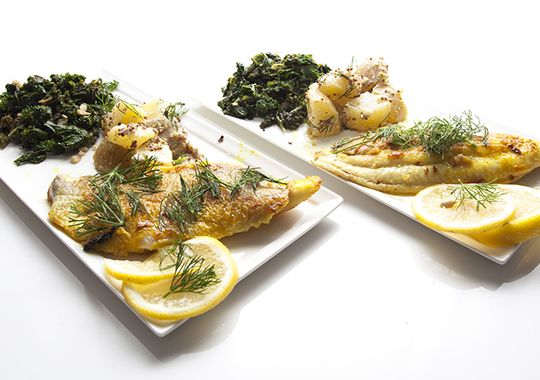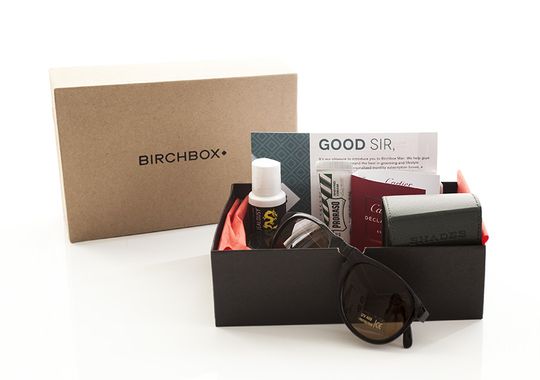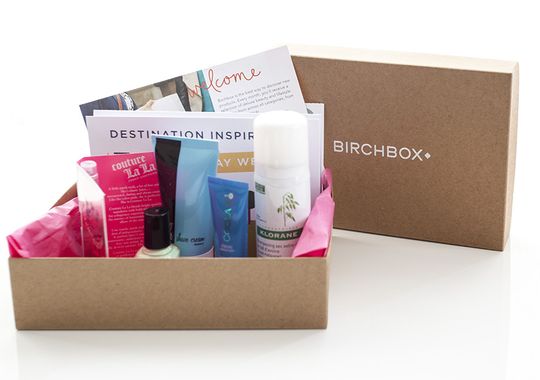Surf Report: Online services deliver the goods
What can't you get from the Web these days? Surf Report takes five online services for a spin to see what they offer.
PERSONALIZED WINE RECOMMENDATIONS
Earlier this summer, I highlighted Club W[1] as an innovative way to receive personalized wine recommendations based on preferences for familiar foods and flavors, such as coffee, salt, citrus and earthiness. Also aiming to provide smarter wine suggestions, Tasting Room[2], from wine e-commerce site Lot18, takes a different approach by providing members with a range of wine varietals to sample.
The Tasting Room experience begins when subscribers receive a wine-tasting kit ($10) with two whites and four reds, each bottle measuring 50ml. The mini-bottles, filled using a special system that transports wine from standard 750ml bottles without exposing the liquid to oxygen, are numbered in the order they should be consumed, generally increasing in boldness with each sample. Users head online to rate which wines they like best, in a system vaguely reminiscent of an optometrist appointment where the doctor asks you to choose which projected image is clearer: one or two, two or three, two or four, etc.
Taking this information, Tasting Room compiles a set of "WinePrints," or wine profiles for reds and whites. For example, my preference for the Cabernet Sauvignon helped the service identify partially toward big, bold and fruit-forward reds. Meanwhile, my rating of the Chardonnay over the Sauvignon blanc helped determine a penchant for rich, full-bodied whites. Using these compiled WinePrints, the service prepares a shipment of full-sized bottles tailored to users' palates.
Tasting Room takes the mystery out of finding wines that match members' tastes, but the offerings go beyond bottle recommendations. It's the wine education I appreciate the most because it prepares me for the real wine world (stores and restaurants) where a savvy tech service isn't there to coddle to me. By teaching me to speak wine — a language I'll admit lacking vocabulary in — I have a better sense of how to order from an unfamiliar (read: intimidating) wine list. The phrases I'm equipped with, such as "full-bodied whites" or "New World wines," can help shopkeepers and sommeliers guide me toward the winners among a panoply of options.
RELATED: Fridge is wine lover's fantasy[3]
REVIEWED.COM: Frozen food tries to make a comeback[4]

NatureBox costs $20 a month.(Photo: Alice Truong for USA TODAY)
HEALTHY SNACKS TO YOUR DOOR
As a mindless muncher, I have a tendency to snack on anything in sight without regard for nutritional labels. It's a bad habit, but I know I'm not alone.
To curb this routine, NatureBox[5] provides subscribers with a monthly box of nutritionist-approved snacks. The health-conscious can appreciate that these treats are free of high-fructose corn syrup, partially hydrogenated oils, trans fats, artificial sweeteners, artificial flavors and artificial colors, making them better than most of what's found on supermarket shelves. According to the company, Americans consume about a quarter of their daily calories by snacking. By providing the convenience of a $20 a month subscription service, NatureBox aims to keep pantries stocked with healthy options, which are repackaged and rebranded by the company. Since its launch last year, NatureBox has collected a fair amount of data on customer preferences and hopes to use that information to create a snack recommendation engine, which I have to say is the best kind of recommendation engine I've ever heard of.
A sample box delivered to my doorstep included five bags of snacks, each roughly measuring three to four ounces. On the savory side were nuts of different flavors while the sweet snacks included dried apples, peanut butter oat cookies and blueberry almond rice squares. It's hard to complain when snacking is part of my job description (note to self: add professional snacker to my business cards), but it's easy to tire of nuts, a food item I typically reserve for the trail, and the sweet snacks fall in line with what I expect from healthy brands: a bit mealier, chewier and perhaps less substantive than expected. They won't sate a dessert craving, but if they're around, I'll likely munch nonetheless, which is exactly the point.

Blue Apron will deliver three meals worth of fresh produce to your door each week for $10 per meal per person.(Photo: Alice Truong for USA TODAY)
SKIP THE GROCERY SHOPPING
In case you didn't get the memo, going outside is so overrated. To cater to the hermits, the folks too busy to go to the store and those who are just plain lazy, Blue Apron[6] will deliver three meals worth of fresh produce to your door each week.
Making cooking at home even simpler, the ingredients arrive perfectly portioned to create meals that should take roughly half an hour to prepare, providing 500 to 700 calories of nourishment per serving. (From experience, I'd say it takes closer to an hour, but that's likely due to some combination of incompetence and lack of counter space.) Accompanying each box are recipes crafted by Blue Apron's in-house chef (and co-founder) Matthew Wadiak. Like pages from a cookbook, these sheets feature step-by-step instructions with photo illustrations. A collection of past recipes is available on the company's website. Blue Apron, which currently serves the eastern half of the U.S., prides itself on sourcing ingredients, many of them seasonal, from local suppliers with sustainable practices "as much as possible."
Blue Apron offers two plans — one with meat and fish, another for vegetarians — packing its boxes with biodegradable insulated liner to keep produce cold during shipping. When the service sent me a box to try, it included the ingredients for three healthy meals: lamb and beef rice noodles with mint, lime and ponzu; chicken with tomato, fennel and creamy tarragon sauce; and golden catfish with sauteed kale and dijon potato salad. Because the boxes include the correct portions (down to the third of a cup of heavy cream and half a teaspoon of turmeric), this allows home chefs to experiment with new ingredients without having to buy large quantities when a recipe only requires a small amount. All that's expected from members is salt, pepper and olive oil in the pantry.
Some people choose to cook at home so they can control what they put into their bodies while others are motivated to save money. The two aren't mutually exclusive, but for the latter, the economics of Blue Apron might not make sense. At $10 per meal per person, Blue Apron isn't necessarily more expensive than eating out, but it does present a premium compared with supermarket prices for the raw ingredients alone. But, of course, that requires you to go outside.
A TASTE OF LIFESTYLE PRODUCTS
Aimed at helping consumers discover grooming and lifestyle products, Birchbox[7] delivers a monthly box featuring a handful of toiletries-sized samples from both indie and well-established brands. Members who want more than just a taste can go to the company's online store to purchase full-sized products.

Birchbox for Men costs $20 per month.(Photo: Alice Truong for USA TODAY)
Birchbox's original offering focused exclusively on women, providing trial-sized creams, soaps and scrubs, among other items. But last year, the company expanded with a new vertical targeting men who aren't afraid to admit they want to look and smell nice (or at the very least, men whose girlfriends want them to look and smell nice). The $20 a month cost for the men's subscription is twice the price of the women's box, but the lifestyle products encompass a broader range, including the occasional gadget.

Birchbox costs $10 per month.(Photo: Alice Truong for USA TODAY)
Upon opening the box for women, I was immediately overwhelmed with a candy-like aroma wafting from the 0.05 fl oz of Juicy Couture perfume. Other items included mint-green nail polish, shaving cream, SPF 30 sunscreen and dry shampoo from the French brand Klorane (though the instructions printed on the bottle were in French, a handy informational card that includes descriptions and prices for full-sized items had English instructions). The men's box had its similarities, down to the small vial of fragrance, this time from Cartier (the full-sized item for this sample was the highest-end product of the two boxes at $105). In addition to the grooming products — facial scrub, hair styling cream and shaving cream — the box included a nifty pair of collapsible sunglasses that fold down to fit a container slightly larger than a cigarette box. These shades, a full-fledged item and not a sample, best illustrate why Birchbox charges a premium for its men's offering. I have to say, as a member of the fairer sex, I'm a bit jealous it's the men who get nifty gadgets as part of their subscriptions.
FACELIFT FOR PHOTO-HOSTING SITE
Breaking away from the these delivery subscriptions, I wanted to take a moment to point to SmugMug's amazing redesign unveiled at the end of July. The photo-hosting service[8], popular for helping photographers sell their work online, was completely revamped from head to toe, sporting a responsive, mobile-friendly site that scales gorgeous photos for screens of every size. Overall, these changes represent SmugMug's most dramatic upgrade since its creation in 2002.
Subscribers can use any of the more than 20 stunning photo templates as is, or build off these blueprints with advanced CSS or dead-simple drag-and-drop elements. The latter lets users add, move and delete content blocks — such as a single image, gallery, slideshow, text, social media icons, search bar and more — to quickly customize their portfolio sites. The ability to make sweeping changes across the entire site or fine tune specific pages (such as, the homepage, all galleries or specific galleries) makes this a cinch to customize.

SmugMug offers photo-hosting starting at $5 a month.(Photo: Alice Truong for USA TODAY)
When existing users migrate their old SmugMug sites, the data that's associated with their photos, such as keywords and captions, remain intact. However, those who have invested substantial time into the old SmugMug should know their advanced customizations won't make the leap once they hit publish. Given the drastic differences in presentation, organization and maintenance, I think it's worth doing, even if photographers have to spend an afternoon tinkering with the colors, fonts and other stylings. For those intrigued, SmugMug[9] offers a 14-day free trial, and all memberships, even the entry-level one at $5 a month, include unlimited photo uploads.
E-mail Alice Truong at
This email address is being protected from spambots. You need JavaScript enabled to view it.[10]
. Follow her on Twitter:
.
References
- ^ Club W (www.usatoday.com)
- ^ Tasting Room (www.tastingroom.com)
- ^ http://refrigerators.reviewed.com/features/dacor-dispenser-is-a-wine-lovers-fantasy?utm_source=spikes&utm_medium=referral&utm_campaign=collab (refrigerators.reviewed.com)
- ^ http://refrigerators.reviewed.com/features/frozen-food-tries-to-make-a-comeback?utm_source=spikes&utm_medium=referral&utm_campaign=collab (refrigerators.reviewed.com)
- ^ NatureBox (naturebox.com)
- ^ Blue Apron (blueapron.com)
- ^ Birchbox (www.birchbox.com)
- ^ photo-hosting service (usatoday30.usatoday.com)
- ^ SmugMug (smugmug.com)
- ^ This email address is being protected from spambots. You need JavaScript enabled to view it. (rssfeeds.usatoday.com)
- ^ http://twitter.com/#!/alicetruong (twitter.com)









